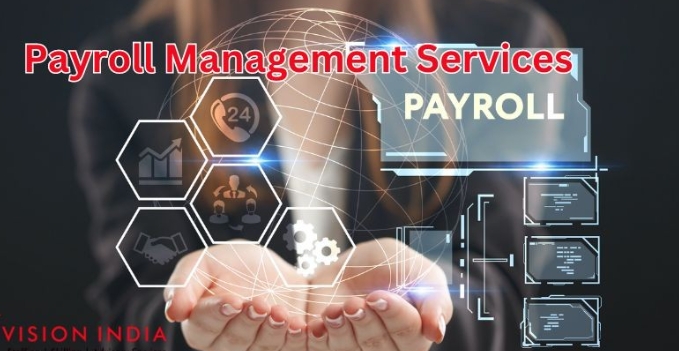In today’s fast-paced business environment, staying competitive requires agility, efficiency, and a seamless flow of information. Enterprise Resource Planning (ERP) systems play a crucial role in enabling organizations to integrate various departments and functions into one unified platform, optimizing resources, improving decision-making, and driving growth. As we move into 2025, ERP solutions are evolving to meet the complex demands of modern businesses. In this guide, we will explore everything you need to know about ERP solutions, how they can benefit your business, and the top trends to watch in 2025.
What is ERP?
Enterprise Resource Planning (ERP) is a software system designed to manage and integrate core business processes. These systems provide a centralized platform that connects departments such as finance, HR, inventory, sales, and procurement, enabling businesses to streamline operations and enhance collaboration. By automating processes and providing real-time insights, ERP solutions help businesses make informed decisions and improve overall efficiency.
Why ERP is Essential for Businesses in 2025
With technological advancements and growing customer expectations, businesses need robust systems to stay ahead of the curve. Here’s why ERP systems are more important than ever in 2025:
1. Enhanced Efficiency and Automation
ERP solutions automate a wide range of tasks, including data entry, report generation, and inventory management. This reduces manual work, minimizes errors, and frees up time for employees to focus on higher-value activities.
2. Improved Decision-Making with Real-Time Data
Modern ERP systems provide businesses with real-time insights, giving decision-makers the data they need to make informed choices. With a comprehensive view of operations, companies can identify trends, optimize processes, and respond quickly to market changes.
3. Streamlined Collaboration Across Departments
An ERP system connects all departments within an organization, creating a centralized database that can be accessed by authorized users. This ensures better collaboration, improves communication, and ensures that everyone is on the same page.
4. Scalability for Business Growth
As businesses grow, so do their needs. ERP systems are highly scalable, meaning they can be expanded to accommodate new users, departments, and processes without compromising performance.
5. Cost Savings
By optimizing resources and improving productivity, ERP systems help businesses reduce operational costs. Additionally, automation and streamlined processes can eliminate the need for redundant systems and reduce the risk of errors that lead to costly mistakes.
Top ERP Trends to Watch in 2025
The ERP landscape is constantly evolving to meet the changing needs of businesses. Here are the top ERP trends for 2025 that you should be aware of:
1. Cloud-Based ERP Solutions
Cloud ERP systems are increasingly popular due to their flexibility, scalability, and cost-effectiveness. Cloud-based ERP allows businesses to access their data and applications from anywhere, making it ideal for remote work environments. With minimal upfront costs, cloud ERP also reduces the need for extensive IT infrastructure.
2. AI and Machine Learning Integration
Artificial Intelligence (AI) and machine learning are transforming ERP systems by automating decision-making, improving forecasting, and providing predictive analytics. In 2025, we can expect ERP systems to incorporate more AI-powered features, helping businesses make smarter decisions faster.
3. Mobile ERP
With the rise of mobile workforces, mobile ERP is gaining traction. Mobile apps for ERP allow employees to access data, collaborate, and perform tasks on the go, providing greater flexibility and productivity. Mobile ERP will continue to evolve, offering more features and capabilities in 2025.
4. ERP for Small and Mid-Sized Businesses (SMBs)
ERP solutions were once reserved for large enterprises, but that’s no longer the case. In 2025, ERP systems are becoming more accessible and affordable for small and mid-sized businesses (SMBs). With customizable solutions and cloud-based platforms, SMBs can now benefit from ERP’s efficiency and scalability.
5. Advanced Reporting and Analytics
In 2025, ERP systems will offer even more advanced reporting and analytics tools, enabling businesses to gain deeper insights into their operations. With customizable dashboards, businesses can track key performance indicators (KPIs), monitor financial performance, and assess inventory levels in real-time.
6. Enhanced Security Features
As cybersecurity threats continue to rise, ERP vendors are focusing on enhancing security features. Expect ERP systems to incorporate multi-factor authentication, data encryption, and regular security updates to protect sensitive business data.
How to Choose the Right ERP for Your Business
With so many ERP solutions available, choosing the right one for your business can be a daunting task. Here are a few key factors to consider when selecting an ERP system:
1. Business Needs
Identify the specific needs of your business and choose an ERP system that aligns with your goals. Do you need strong financial management capabilities? Are you looking for a system with inventory management features? Understanding your requirements is crucial to selecting the right ERP.
2. Scalability
Choose an ERP system that can grow with your business. Make sure the solution is scalable, allowing you to add users, departments, and functionality as your business expands.
3. User-Friendliness
An ERP system is only effective if your team can use it efficiently. Look for a solution with an intuitive interface and ease of use. Training and user support are also important factors to consider.
4. Customization
Every business is unique, so choose an ERP system that can be customized to fit your specific processes. Whether it’s modifying workflows or adding new features, customization ensures the ERP system meets your business’s needs.
5. Vendor Support and Maintenance
Ensure the ERP vendor offers reliable customer support and regular system updates. The right support team can help troubleshoot issues and ensure your system is always running smoothly.
Top ERP Solutions in 2025
Here are some of the leading ERP solutions in 2025:
- SAP S/4HANA: A robust and scalable ERP solution for large enterprises, offering advanced analytics, automation, and real-time data.
- Oracle ERP Cloud: A cloud-based solution with AI and machine learning capabilities, designed to streamline financials, procurement, and project management.
- Microsoft Dynamics 365: A flexible ERP system with integrated CRM functionality, ideal for businesses looking for a seamless solution across sales, finance, and operations.
- NetSuite by Oracle: A comprehensive cloud ERP system for small to medium-sized businesses, offering financial management, CRM, and ecommerce features.
- Odoo: An open-source ERP with a modular approach, allowing businesses to customize and add functionalities as needed.
Conclusion
As we enter 2025, ERP solutions are more advanced and accessible than ever before. Whether you’re a small business looking for an affordable solution or a large enterprise in need of an all-in-one platform, there’s an ERP system that can help you optimize operations, improve decision-making, and drive business growth. By staying informed about the latest trends and selecting the right ERP for your needs, you can unlock your business’s full potential and stay ahead of the competition.



